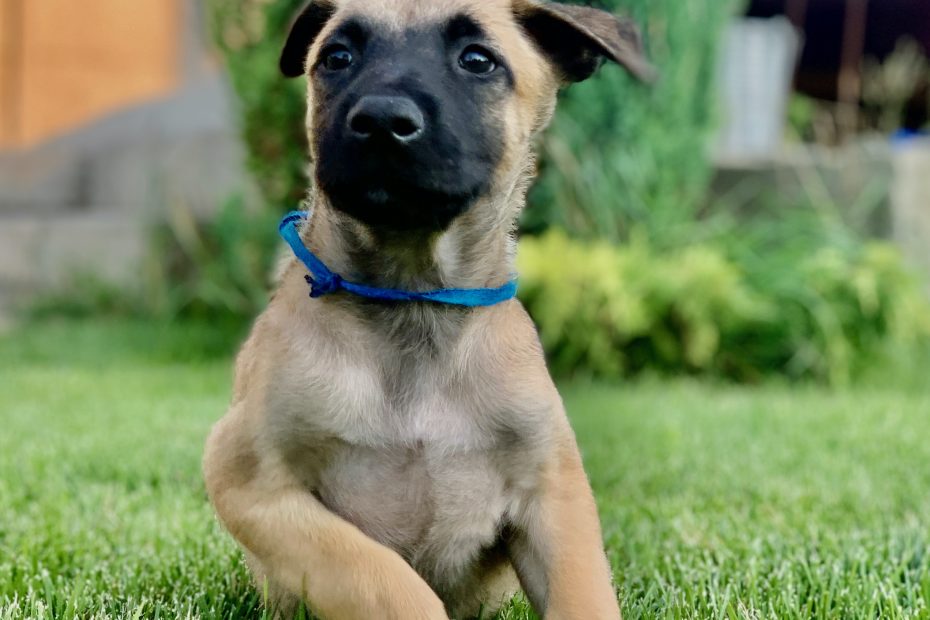In our Gratsiano kennel, one to three litters are born annually. This might seem minimal considering the popularity of our dogs in different countries. They have proven themselves not only as successful sport dogs but also as excellent companions, providing comfort at home and in nature.
Now, you might wonder what is the most challenging aspect for us as breeders. It’s not the selection of breeding pairs for our breeding bitches, the whelping process, raising the puppies, or even delivering them in challenging quarantine times to new owners. The most challenging part is the choice – evaluating the potential of each puppy, understanding their character traits, and selecting the best and most beloved one for each owner, with whom they will experience many joyful and challenging moments in life.
You might ask why I say this. Doesn’t each owner come to pick their favorite, and whoever comes first gets the puppy? Not at all. Reserving puppies starts long before their birth. Sometimes, if someone wants a puppy from a specific bloodline or a particular dam, the wait can be about a year. That’s how we waited until our Mecberber Lulu came to us. She was born in the third litter we had signed up for, but the chance to get a puppy from them didn’t present itself. And, as it turned out, it was for the best.
After someone contacts us with a request to purchase a puppy, and the terms of sale and delivery suit them, we put the interested party on a waiting list with a specific number. This is done so that individuals have an idea of their chances of getting a puppy from the expected litter if the puppies haven’t been born yet. After the birth of a new litter, we contact everyone on the waiting list to confirm their intentions. If there are more interested parties than there are puppies, we may have to move those who didn’t get a puppy this time to the next litter. Unfortunately, we can’t control the number of puppies or the gender ratio in a litter.
At this point, we discuss the conditions for picking up the puppy, the vaccination schedule, and other details, and a prepayment is taken. From this moment, the puppy is considered reserved.
As a rule, by the time they reach the age of 2 months and are ready to go to their new homes, all the puppies are already reserved. At this point, we engage with 5-13 future «moms and dads» of our little ones.
From the second or third day after birth, everyone wants to see photos and videos of the puppies, which is commendable. We spend all our free time with them, and it’s delightful to share our emotions with the future owners. However, believe me, at this age, all litters look alike. The coat color of our Malinois is also traditional – don’t expect dark puppies if both parents are light. We have stated multiple times that we prefer large, light-colored dogs, and that’s what we strive to breed.
When the puppies are just starting to open their eyes, I receive numerous messages with questions about their character traits. Everyone is eager to know who stands out as the most unique in the family.
But everything has its time, and temperament traits begin to manifest themselves closer to two months. At this age, with two vaccinations under their belts, the puppies are getting ready to leave for their new homes within the country. As for those facing a long journey across borders, they wait until the veterinary entry rules for the new country allow their travel.
Exactly, it’s after 6 weeks of age that the distribution of which puppy goes to whom begins.
Of course, every owner, especially those seeking a companion for sports activities (which is the majority among our owners), has a specific vision with a set of desired qualities for their future dog:
- Excellent food motivation, i.e., a good appetite.
- Prey drive, i.e., the desire to pursue various objects and toys.
- Confidence in new environments.
- Ability to quickly recover from stress.
- Sociability, the willingness to collaborate with humans.
- Balanced temperament, i.e., the ability to calm down quickly.
- Reaction to pain, i.e., the puppy should not be overly sensitive to mild painful stimuli like injections or pinches.
And for us, as professionals in the field of sport dog training, it’s also important:
- Not just a good appetite but the puppy’s ability to become active during food-related activities.
- Not just a desire to play with toys but speed, completeness, and strength of engagement before capturing them.
- Not just a lack of reaction to pain but an activation and strengthening of the desire to work after slight discomfort.
- Not just balance and quick transitions between states but a willingness to substitute work with the handler.
Believe me, no videos shot by the breeder can capture all these moments. Only through daily interaction and play with the puppies can one form an opinion about each puppy’s qualities.
It’s not that in one litter only one puppy is the most playful, with the best appetite, and the bravest. Typically, these traits are distributed among different puppies. One might be braver than the others, another may have a bigger appetite, and a third could be the most playful.
Therefore, when choosing a puppy for each owner, it’s crucial to rely on the breeder’s experience. Trust me, we are invested in ensuring that each of you gets the puppy you dream of. Describe the type of dog you prefer—whether more active or calmer, more friendly or cautious towards strangers. What’s more important, whether the puppy works better with food or is more engaged in play
